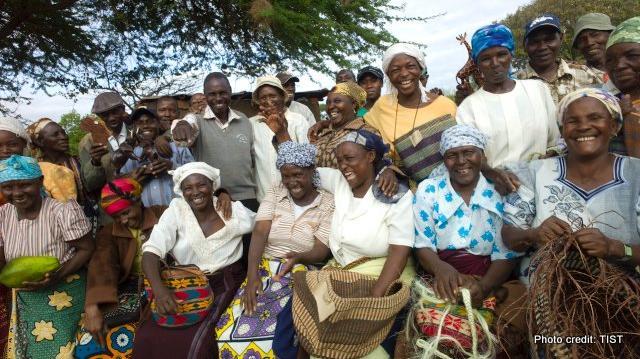

 Michelle Wieland is the Socio-Economic Advisor for the Wildlife Conservation Society’s (WCS) Africa Program based in the Democratic Republic of Congo (DRC) and has been working in Africa for the past 18 years. She is also part of the Africa Biodiversity Collaborative Group (ABCG) Land and Resources Tenure Rights task group working on the gazettement of the Kabobo National Reserve in DRC. She talks to ABCG about her work and on protecting what is now the Kabobo Wildlife Reserve.
Michelle Wieland is the Socio-Economic Advisor for the Wildlife Conservation Society’s (WCS) Africa Program based in the Democratic Republic of Congo (DRC) and has been working in Africa for the past 18 years. She is also part of the Africa Biodiversity Collaborative Group (ABCG) Land and Resources Tenure Rights task group working on the gazettement of the Kabobo National Reserve in DRC. She talks to ABCG about her work and on protecting what is now the Kabobo Wildlife Reserve.
Tell us about your current work at the Wildlife Conservation Society?
In my role I support our country programs in Africa by providing guidance on how to engage the community when dealing with social issues or challenges that affect the community. This includes helping people understand social concepts in conservation that may not have been in university curriculums. Good governance, the importance of human wellbeing, land tenure, effective engagement, and setting gender targets.
How does your work in DRC relate to ABCG activities?
The Wildlife Conservation Society has been working in what is now the Kabobo Wildlife Reserve for almost a decade. Years of work in this area has uncovered the biodiversity richness of the area with identification of new and endemic plant and animal species. Located in southeastern DRC, Kabobo Reserve is also home to the several communities living around the area and who depend on it for their livelihood.
Through the Land and Resources Tenure Rights working group, ABCG is piloting new approaches for securing tenure in critical ecosystems in Africa, one such ecosystem is the Kabobo Reserve. In this area, we are working to protect biodiversity through a co-management approach that will enable the local the community exercise their authority in managing their land in ways that are consistent with conservation inorder to preserve the rich biodiversity of this area.
What are some challenges facing the reserve that make protecting it important?
The forests of Kabobo feed and protect the hydro-electric dam, the main source of electricity for the town of Kalemie, additionally Kabobo Reserve together with adjacent Ngandja Reserve and Luama Katanga Reserve contributes to the conservation of the largest forest and water catchment on Lake Tanganyika supporting the fishing industry that feeds the province. Outside herders coming to graze their cattle and risking deforestation and land conflicts poses a big challenge. Illegal logging, bushmeat hunting, migration, mining, and conflict are among other challenges that threaten to degrade the forests that protect both the dam and waters of the lake.
Is the community aware of the importance of this area?
The local community, both indigenous Batwa and their Bantu neighbors, place great value in this area as it supports their livelihood and traditional heritage. The provincial government also understands this value and has been a critical supporter of our program. Much more work needs to be done to engage urban dwellers about the importance of Kabobo and the forests. One of conservation’s biggest challenges across the globe is to engage an ever-increasing urban population—and is something we all need to do a better job at.
“The decree’s co-management approach is a first of its kind in DRC that will allow the local community to contribute to the governance of the reserve.”
In Decem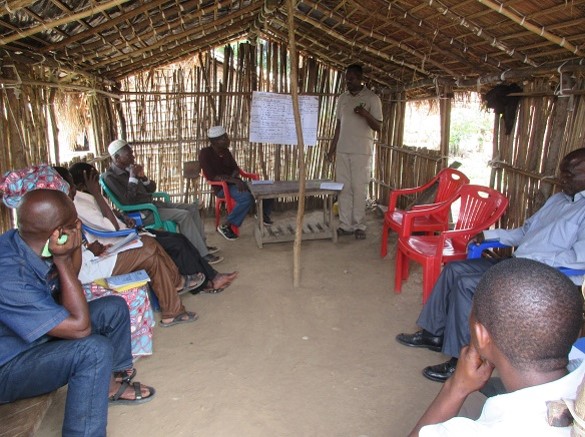
With wild places diminishing, this was an important milestone for the many years of work in this area by many different partners, but in great part due to Deo Kujirakwinja, the WCS project leader in Kabobo. ABCG activities supported the active involvement and participation of the local community in the gazettement process. The process involved engaging the local community and the local government in order to secure consent to gazette the area and their support in the process. Setting up community structures that will enable the local community to manage the reserve and training these structures on the co-management model. The decree’s co-management approach is a first of its kind in DRC that will allow the local community to contribute to the governance of the reserve.
What are the next steps following the gazettement and what lessons can you share from this work?
The WCS team under the leadership of Deo is working on building the capacity of the community and the local government on the co-management approach and setting up the legal framework for the approach. Good governance is fundamental for Kabobo, and includes not only capacity, but also ensuring legitimacy and all stakeholders, weak and poor, to follow the rules that are set up in the reserve. We want to share experiences learned in the gazettement process with other actors and apply these lessons in other areas where we need to establish more protected areas.
What other biodiversity threats should conservationist invest more in?
Illegal bushmeat hunting and overfishing is the biggest threat to wildlife in central Africa, and a growing threat across the continent– there is need to do more work in this area in order to understand the cultural, weak governance, and food insecurity drivers that contribute to unsustainable use in order to develop feasible solutions.
Tell us of a conservation activity that you’re proud of
One person that continues to inspire me is a former National Park gate attendant that I worked with in Malawi 18 years ago. At that time, I was a Peace Corps Volunteer implementing the community-based natural resource management policy, and in need of a counterpart. I successfully had the gate attendant, a community member, reassigned to the community conservation team despite him not having the normal academic credentials necessary to be a ranger. Together, we were able to engage the local chiefs to create a village lodge for tourists interested in local culture. This community endeavor remains operational today. The success of this work came from the local people’s commitment and motivation, and more importantly I learned the greater significance of having local, even if less academically ‘qualified’, staff to attain project success.
Photos
Photo1: Michelle Wieland. Photo credit: ABCG
Photo2: WCS holding a consultative meeting at village level in Kabobo. Photo credit: WCS
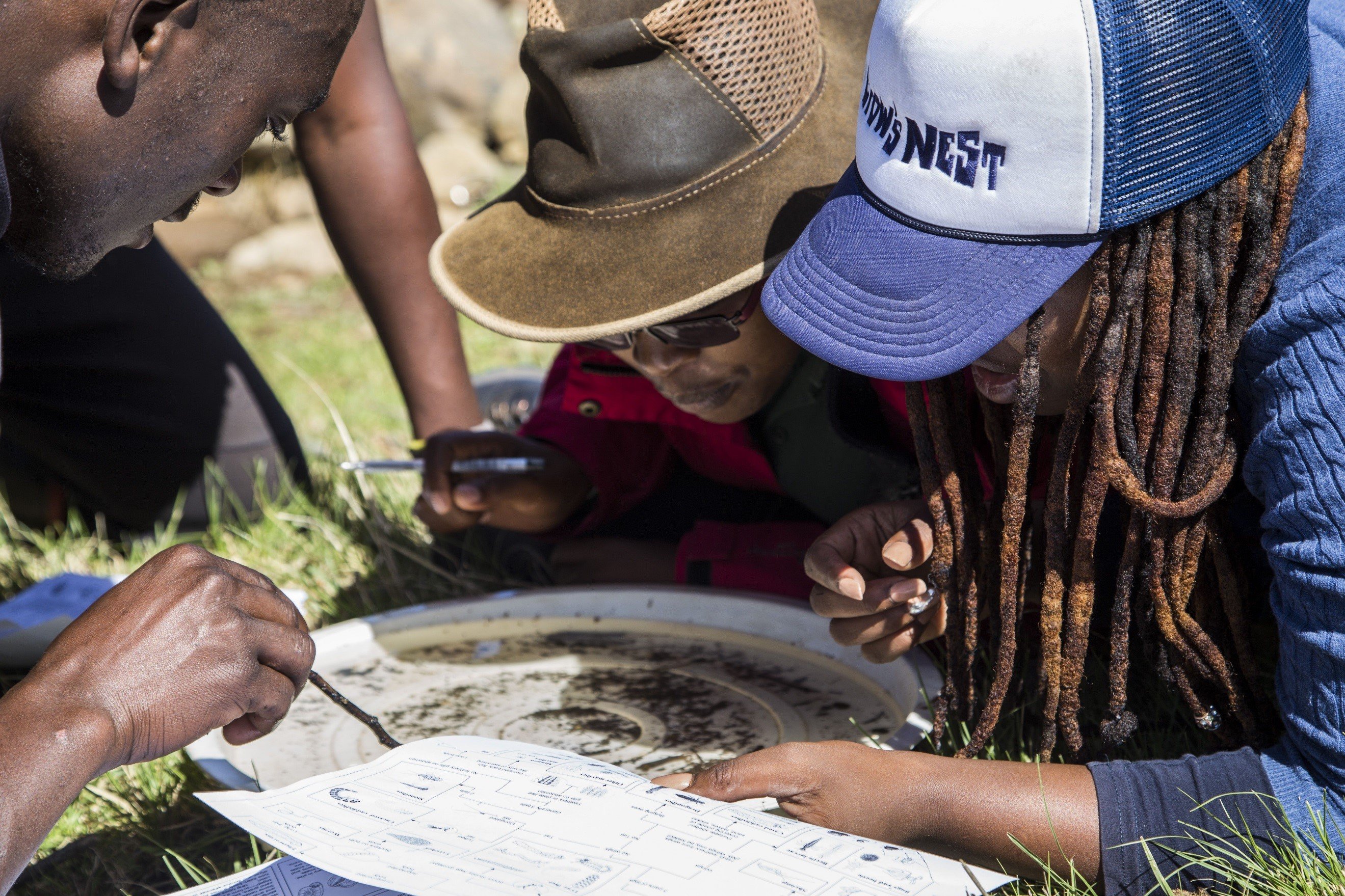 ‘Uganda’s Budongo-Bugoma Forest Corridor, situated in the north of the Albertine Rift, is considered to be one the most biodiverse regions of Africa, well known for its chimpanzee population. However, this biodiversity hotspot is under pressure from high population growth, deforestation, and seasonal water supply extremes — and the flash point is often access to water.
‘Uganda’s Budongo-Bugoma Forest Corridor, situated in the north of the Albertine Rift, is considered to be one the most biodiverse regions of Africa, well known for its chimpanzee population. However, this biodiversity hotspot is under pressure from high population growth, deforestation, and seasonal water supply extremes — and the flash point is often access to water.
‘Elsewhere on the continent in South Africa’s dry Eastern Cape Province, the country’s last free-flowing river, the Mzimvubu, is experiencing environmental stresses of its own. Surrounding grasslands are overgrazed, free-roaming livestock pollute the river, invasive tree species proliferate the landscape, and the majestic mountain terrain is severely eroded. In spite of this degradation, the river serves as the vital water source for more than one million people (and growing), many of whom are struggling to make a living off the land.
‘The pressures on these two ecosystems and the humans and wildlife that depend upon them are immense. How does one promote conservation and environmental preservation in communities lacking in such basic human needs as regular water supply and sanitation? The answer may lie in the intersection of freshwater resource management and water, sanitation, and hygiene (FW-WASH).
In Uganda, ‘interventions target 10 villages and range from restoring and supplying new water sources to engaging the community at the school level to improve sanitation and hygiene practices.
In South Africa, ‘trained community volunteers took on the first phase of pilot work to protect the river and improve water quality in four Alfred Nzo District Municipality sites.
‘Water quality monitors help perform biodiversity analysis to see what improvements in stream quality are taking place.
‘In 2011, USAID began funding a unique partnership of seven U.S.–based international conservation NGOs — the Africa Biodiversity Collaborative Group (ABCG) — to strengthen collaboration to address complex conservation challenges in sub-Saharan Africa and identify solutions. The consortium currently tackles five issue areas, one of which is the link between global health and biodiversity conservation, which includes an exploration of FW-WASH.
‘By linking FW and WASH, USAID aims to reduce watershed degradation and pollution and improve the health of the water sources and the populations who depend upon them. Protecting and restoring freshwater ecosystems that serve as drinking water sources for the poor and underserved are considered important measures to reduce water insecurity, an increasing concern in Africa and a key goal of the U.S. Government Global Water Strategy.
Read the entire article that was part of World Water Day USAID Global Water newsletter stories here: A Win-Win Approach to Biodiversity, March 12, 2018
Photo caption: The CSA team and water monitors conduct a stream quality assessment to determine changes and improvements in stream health. Photo credit: Patrick Nease/Conservation Internationale

The 2018 World Water Day theme, Nature for Water, speaks of the importance of working on nature-based solutions to the water challenges we face in the 21st century.
The Africa Biodiversity Collaborative Group, through its thematic working group Global Health Linkages to Biodiversity Conservation, is working on the integration of freshwater conservation and Water Sanitation and Hygiene (WASH) by building the capacity of communities to conserve freshwater resources while improving human health and well-being.
We are implementing this integrated approach in South Africa through our members, Conservation International (CI) and Conservation South Africa, CI’s local affiliate office, and in Uganda through the Jane Goodall Institute.
Working in 10 villages in the Albertine rift region of Hoima and Masindi Districts in Uganda, the Jane Goodall Institute (JGI) has been working on building local community capacity to conserve freshwater resources and improving sanitation and hygiene. This region contains an important network of tropical rainforest, which faces threats due to high human population growth, such as deforestation, human-wildlife conflict due to shared water points, as well as sanitation challenges.
Integrated Freshwater Conservation and WASH achievements in Uganda
#1 Renovation of five protected springs: This has greatly improved access to, clean water and water points. Human- wildlife conflict has been reduced due to the improved access.
#2 Construction of five community rain water harvest points: Rainwater harvesting points were identified and constructed in five primary schools in the project area. The provision of the water sources has greatly improved sanitation and hygiene in the beneficiary schools.
#3 Water quality assessments for water facilities: JGI, in partnership with the Directorate of Water Development Laboratory (Government of Uganda), conducted an extensive water quality assessment of all main water points in the target project area so as to provide clean and safe water.
#4 Training of Water Management Committees: Water management user committees were established and trained by staff from the District Water Office and the Sub County Community Development Officer of Budongo.
#5 Training of Community Based Artisans: At each of the water sources, two members of the water management user committees were selected as artisans to repair and maintain the water sources. The artisans were also trained in: basic plumbing including repairs of simple system leaks, maintenance, masonry, and proper use and handling of tools and equipped with a set of tools.
#6 Protect and conserve water sources: Tree seedlings have been planted at the protected water springs. The area above the protected spring has also been planted with Paspalum notatum, a creeping grass to aid in reducing surface run-off and system contamination. The tree cover is intended to provide future shade over the water and reduce evaporation from direct exposure to sun during the dry season.
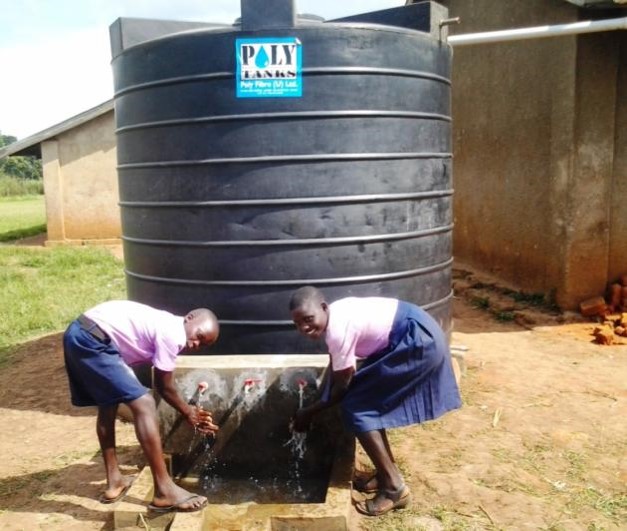
#8 Water and sanitation sensitization: Trained teachers in creating WASH friendly schools. A WASH-Friendly School is clean, safe, has adequate, well-maintained toilets or latrines for girls and boys and for teachers with water, paper, or other material for anal cleansing; has a place to wash hands with soap/ash and running water after using the latrine; and has enough, safely stored clean drinking water for the school community. The training has equipped teachers with knowledge to integrate lessons on good hygiene practices and water resources conservation into school curriculum, with specific focus on fecal-oral transmission of germs, hand-washing, building hand-washing facilities, latrine use and maintenance, water purification methods and safe drinking water, and water sources protection and conservation.
#9 Awareness materials: Awareness materials with messages on germ transmission, importance of hand washing, sanitation and hygiene practices, and protection of river banks and best practices have been developed and disseminated to community members and schools.
#10 Conduct reviews: Project review in all the villages to assess progress, and to identify success stories, achievements and key challenges were conducted. Notably, was the improved sanitation and hygiene practices among community members.
A healthy ecosystem
These achievements demonstrate the benefits of an integrated systems in improving livelihoods while conserving biodiversity through working hand in hand with the community therefore creating a more sustainable conservation approach.
Photo caption
Photo1: Women from Siiba Village, Masindi Distict, Uganda collecting water from Siiba spring which was rehabilitated through ABCG project. Photo Credit: Brenda Mirembe, JGI. August 2017.
Photo2: Students at Karongo Primary school washing their hands at the newly installed water tank at their school. Photo credit JGI
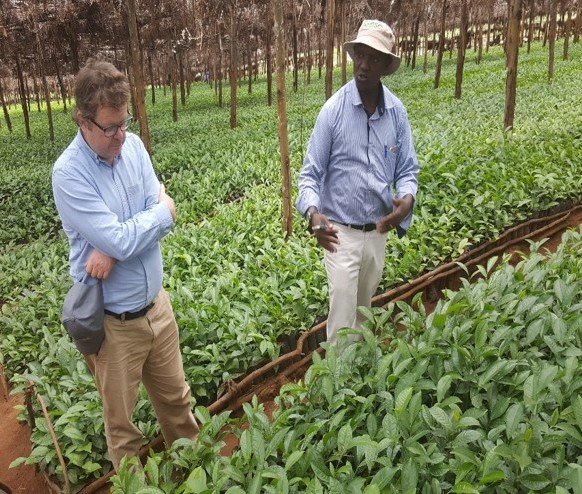 Many countries in Africa are grappling with food security concerns. Inadequate land use planning, illegal logging, uncontrolled development, and poor farming methods are some of the challenges that countries are dealing with as demand for food rises.
Many countries in Africa are grappling with food security concerns. Inadequate land use planning, illegal logging, uncontrolled development, and poor farming methods are some of the challenges that countries are dealing with as demand for food rises.
The Southern Agricultural Growth Corridor of Tanzania (SAGCOT) is an important food basket in Tanzania with rich fertile lands, extensive forests and reliable water sources. This area presents numerous opportunities for sustainable and profitable agriculture, as well as biodiversity conservation, as it is also an important wildlife corridor in East Africa.
The Nature Conservancy (TNC) has been leading two interrelated projects in order to realize the objectives of this area and support the government in meeting its agriculture greening ambition. TNC’s Agriculture Strategy Director for Africa Region, Felix Kamau, presented these initiatives at the Africa Biodiversity Collaborative Group presentation in Nairobi, Kenya on February 21, 2018. The first initiative, Science for Nature and People Partnership (SNAPP) for SAGCOT, aimed at generating practical decision support tools to help policy-makers and investors avoid risks and guide sustainable agriculture intensification throughout the corridor. The second initiative, the Water, Land and Ecosystem program, supported by the Consultative Group on International Agricultural focused on laying the foundations for effective landscape planning in the Ihemi Cluster area of SAGCOT.
These initiatives have resulted in a number of decision support tools to guide policy and investment decisions towards environmentally sustainable and socially inclusive agriculture development being developed. Among these tools are:
Through these tools stakeholders are able to make smart land use management decisions to realize the full potential of the land while protecting it.
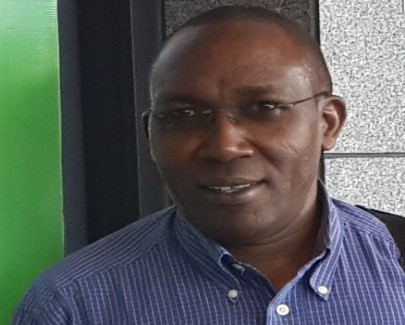
For more information, please contact Felix Kamau at fkamau@TNC.org
This event was hosted by the Africa Biodiversity Collaborative Group in partnership with the International Union for the Conservation of Nature as a part of its Nairobi speaker series, which aims to foster information exchange and lessons sharing among cross-sector practitioners. To participate as a featured speaker, please contact Evelyn Namvua at enamvua@abcg.org and view the Guidelines to Speakers here.
Photo caption
Tea seedlings nursery in Njombe region, SAGCOT Corridor, Tanzania. Photo credit: Felix Kamau, TNC

Big cats: predators under threat was the theme for World Wildlife Day 2018 celebrated on March 3. The event put a global spotlight on the world big cats which include the cheetah, jaguar, leopard, lion, puma, snow leopard and tiger.
John Robinson, the Executive Vice President for Conservation and Science at Wildlife Conservation Society looks at some of the threats that these predators face and what we can do to protect the animals in his post Conserving Big Cats Isn’t Easy, But It’s Possible.
Below are excerpts from the post
‘…….big cats all face severe threats. Loss of habitat threatens their survival. The jaguar has lost almost 50 percent of its historical range in Latin America. The lion has lost 75 percent of its range in Africa, and the tiger a stunning 93 percent across Asia.
‘Big Cats are also hunted and killed by people. These killings often result from the threat these top predators pose to both people and their livestock. This is especially a problem where natural habitat is declining or natural prey is depleted. Big cats prey on livestock and — in the case of tigers and lions — can kill people. Retaliatory killings are common in many places as a result.
‘Big cats are likewise sought after for their body parts. Their fur has long been revered, although implementation of the Convention on International Trade in Endangered Species of Wild Fauna and Flora (CITES) has reduced this threat. The hunting of big cats for their teeth, claws, and bones for traditional medicines has led to tiger losses for years — a major threat that has expanded to lions and, most recently, to jaguars.
‘….what can we do about it? Conservationists know that parks and protected areas are key to conserving species populations. Effective management of these protected areas is needed to ensure that habitat remains intact to prevent hunting of prey species and the direct killing of big cats.
‘One invaluable tool is a GPS-based ranger patrol program known as the Spatial Monitoring and Reporting Tool (SMART), which is now widely deployed in protected areas globally. In the hands of well-trained rangers, SMART technology has vastly improved their efficiency and effectiveness.
‘Wildlife corridors are needed to allow big cats to travel across the broader landscape. Big cats need a lot of space and protected areas are typically insufficiently large to protect viable populations.
‘Conserving big cats is not easy. But it is possible, and we do know how to do it. It requires that we adequately value big cats, and have the commitment and will to give them space to live their lives.
Read the entire blog article Conserving Big Cats Isn’t Easy, But It’s Possible, March 3, 2018
Photo caption
African lion in wild in Uganda. Photo credit: Julie Larsen Maher/WCS
In his February 14, 2018 presentation titled, Countering Wildlife Trafficking in Mozambique – What’s Working and What Hasn’t, Alastair Nelson, Wildlife Conservation Society (WCS), provided background regarding the current wildlife trafficking problem in Mozambique, and how it is situated within the region.
His presentation also illuminated some of the overlaps between wildlife trafficking and other illegal trades (e.g. narcotics, human trafficking), and for northern Mozambique in particular, it covered the breakdown in governance and the rule of law, and how this relates to recent insecurity. It addressed responses that have been tried, what has and has not worked, and what is being done now to tackle these problems going forward.
Featured Speaker
Alastair Nelson has 20+ years conservation experience in the Horn of Africa, east and southern Africa. His career started in South Africa in anti-poaching and moved to black rhino monitoring, Grevy’s Zebra surveys in northern Kenya and working for the Ethiopian Wolf Conservation Program. He then established Frankfurt Zoological Society’s Bale Mountains Conservation Project in Ethiopia before moving to their Africa headquarters to oversee six protected area and ecosystem management projects. In 2010, Alastair joined the WCS as an Assistant Director in the Africa program in New York. In 2012 he moved to establish WCS’s Mozambique country program – initially focusing on co-management of the Niassa Reserve, and strengthening the national protected area management framework. In 2017 he took on a new role supporting WCS’s counter wildlife trafficking work in east and southern Africa, and links to Asia.
Event Resources
Click here to view the webinar recording
Click here to view the presentation slides.
This event was hosted by The Africa Biodiversity Collaborative Group as a part of its Washington DC speaker series, which aims to foster information exchange and lessons sharing among cross-sector practitioners. To participate as a featured speaker, please contact Evelyn Namvua at enamvua@abcg.org and view the Guidelines to Speakers here.
The Watershed – Empowering Citizens Programme is an initiative that aims to build the capacity of civil society organizations to lobby for evidence-based Water, Sanitation and Hygiene (WASH) and integrated water resource management. As one of the strategic partners behind this effort, Wetlands International is implementing projects using this approach in Kenya’s Kajiado and Laikipia counties.
On February 23, 2018 Julie Mulonga, Program Manager at Wetlands International, shared about how working with civil society can mobilize communities to claim their water and sanitation rights and empower them to participate in decision-making. This webinar was part of a series webinars hosted by ABCG’s Integrated Freshwater Conservation-WASH Community of Practice whose aim is to provide a collaborative platform where global health and conservation professionals can share knowledge while connecting and organizing on how to solve common issues.
Event Resources
Click below to watch the webinar recording from the event.
Featured Speaker
Julie Mulonga, Program Manager, Wetlands International
Julie Mulonga is the Program Manager with Wetlands International and has worked in the Water and Environmental sectors for the past 20 years in water and natural resources management programs in Kenya. Julie has been working with Wetlands International for the last five years.
 The Population Reference Bureau recently published an article featuring the Africa Biodiversity Colloborative Groups’ best practices for improving food security and nutrition through integrated approaches.
The Population Reference Bureau recently published an article featuring the Africa Biodiversity Colloborative Groups’ best practices for improving food security and nutrition through integrated approaches.
“Evaluations of Population, Health, and Environment (PHE) programs have found varying degrees of effectiveness in improving human health and biodiversity outcomes. PHE approaches integrate family planning with other health and environmental interventions, with the intention of addressing the challenges that link all three sectors in a holistic manner.”
ABCG conducted a comprehensive literature review to strengthen its PHE pilot projects and further examine these linkages, the findings were shared during the Africa PHE webinar held in December 2017. The speakers, ABCG’s Global Health Linkages to Biodiversity Conservation: Population Health and Environment working group members, Jimmiel Mandima from African Wildlife Foundation and Nathalie Simoneau from World Wildlife Fund, shared that despite robust studies on the interactions between population, health, and environment, few PHE projects systematically monitor and measure the impacts of nutrition and food security on biodiversity and health outcomes.
“Some projects, however, do show evidence that their work improves biodiversity conservation through activities that promote sustainable agricultural techniques, livelihood diversification, conservation agriculture, and other interventions.”
The literature review makes the following recommendations:
1. Encourage funding of more nested, integrated programs that are transformational and have all-round lasting impacts that improve human well-being
2. Require mandatory systematic monitoring and evaluation that measures the impacts of nutrition and food security on biodiversity and health outcomes
3. Allow for adequate investment in process to establish baselines across the PHE aspects, and participatory clarity among the multiple entities that have to implement the integrated programs
4. Commit to long tem program cycles of up to 10 years and use funding vehicles that are not limited to sectoral silos but rather allow integrated programming
Read the entire post on the Population Reference Bureau website and listen to the webinar recording here: Improving Food Security and Nutrition Through Integrated Approaches
More information about the study is available in the literature review: Exploring Cross-Sector Linkages Between Population, Health, Environment, Nutrition, and Food Security: A Review of Best Practices and Lessons Learned
The February 2018 Digest features ABCG’s latest news and recent publications, including the Managing Global Change Impacts on Biodiversity working group’s fact sheet which details their activities to determine how rural communities respond to climate change and consequently how their actions affect biodiversity. Also of note, is the Land and Resource Tenure Rights working group’s report, Community Natural Resources Management in Tanzania. Lastly, view presentation slides and listen to webinar recordings of past ABCG speaker series events.